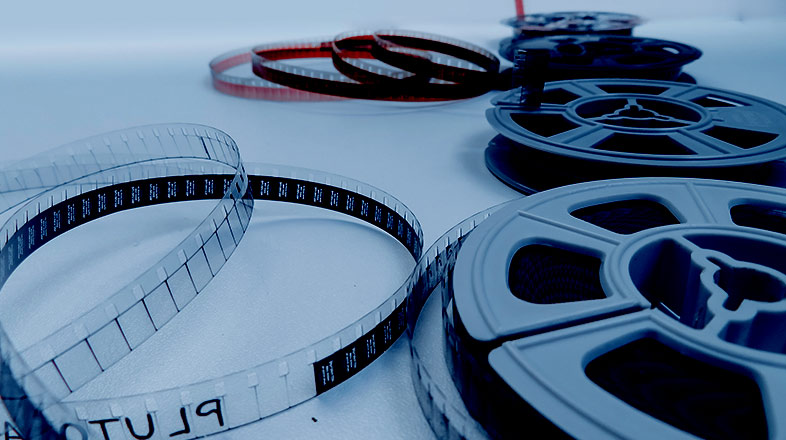Microfiche and Microfilm Scanning
Our microfilm scanning service will transform your microfiche jackets, microfilm rolls, and COM fiche into a text-searchable archive of high-resolution digital image files. We combine state-of-the-art equipment with more than 22 years of scanning experience to help you preserve and protect your microfilm records.
Convert with Confidence
Reliable High-Speed
Image Capture.
Our highly trained staff, technical expertise, and straightforward pricing will take the unpredictability and stress out of your next microfilm scanning project. Other benefits of our service include:
Preserve Your Images
Damaged or deteriorated microfilm can result in the permanent loss of irreplaceable information. Create and store a digital backup of your data to preserve critical data.
Protect Your Data
Storing your data digitally provides access to security features like password protection and encryption, preventing unauthorized access to sensitive information.
Text Searchable
During the scanning process, ID numbers, dates, and other important information can be extracted from your microfilm, enabling you to retrieve images instantly via intuitive text searches.
Enhance Accessibility
Digitizing microfilm allows you to provide secure remote access to your data from anywhere in the world. Simplify collaboration and distribute data more freely.
Reduce Storage Requirements
Microfilm takes up a ton of space and can be expensive to store due to temperature and humidity requirements. Scanning allows you to store your images in the cloud, helping you reduce clutter and reclaim lost space.
Worry Free Storage
Creating a digital backup of your microfiche library gives you peace of mind knowing your data is safe in the unfortunate event of a disaster.
Leave the scanning to us.
We make it easy and affordable to digitize your microfilm library.
Let's Get ScanningHIPAA Compliant & Secure
Our top priority is to the safety and security of your data. While in our possession, your microfilm is locked tight behind badge restricted access & placed under 24/7 hour surveillance, ensuring that our processes meet your data privacy obligations during the scanning process. Our microfilm scanning service is HIPAA and HITECH complaint, and adheres to both federal and state data privacy requirements.
Learn about secure scanning
Film & fiche digitization for
every industry.
We provide scanning services to a wide variety of organizations from across the Northeast. SecureScan is proud to serve:
- Libraries
- Institutional and Corporate Customers
- Government Agencies
- Engineering and Architecture Firms
- Schools and Universities
- Archives
- Aerospace Industry
- Law Firms and Accountants
Looking for a Simpler Solution?
Meet Our Mail-in Microfiche Scanning Service
Experience the ease of digitizing your microfiche with Securescan's new Mail-In Microfiche Scanning service. Simply mail us your microfiche, and we'll transform them into high-resolution digital images. Say goodbye to worrying about lost information—and say hello to reliable and convenient microfiche digitization.
Learn MoreWe Raise the Bar When it Comes to Standards.
In order to ensure that our microfilm scanning service produces the best results possible, we implement strict quality control procedures along with frequent equipment calibration throughout the scanning process.
We also conduct a manual review of each scanned image to ensure that a clear and accurate reproduction has been created, rescanning any images that fail to meet our high-quality standards.
Get a Customized QuoteCommon Questions
Get answers to our most frequently asked microfilm and microfiche questions.
How Do I Estimate How Many Microfiche Images I Have?
Estimating the number of microfiche images can be tricky since they’re stored in sheets. A simple way to get a rough count is by using a ruler. Stack your microfiche sheets to about 1 inch thick, count the sheets in that stack, and multiply by the number of images per sheet. This gives a basic estimate to help with planning.
How Much Does It Cost to Scan Microfiche?
The exact cost of scanning microfiche varies depending on a number of factors including:
- Number of sheets scanned
- Type of fiche
- Final resolution
- Indexing requirements
- Whether or not you require OCR
- Schedule – How fast do you need to scan?
The average cost to scan a single microfiche sheet ranges from $0.75 to $1.25 per sheet for jacket fiche (16mm and 35mm) and $3 to $5 for COM fiche. If you have a roll of microfilm, the cost is typically around $85, depending on the number of images on the roll.
For a more detailed estimate, try our document scanning cost calculator, which factors in additional costs based on your specific requirements.
How Can My Microfiche Be Organized?
After scanning, there are several ways to index your microfiche images. Some systems use sequential numbering or other basic numeric references, which can be captured along with each image. Many jackets include labels that can be extracted via OCR, while CAR jackets (Computer Aided Retrieval) use a unique grid-based reference number to identify positions within the jacket. This information can be added as metadata, allowing for quick, text-based search and retrieval of your files.
What Are the Different Kinds of Microform Images?
The most common type of microform is microfiche—flat strips of microfilm images stored in a clear Mylar sleeve or “jacket.” Jacket fiche comes primarily in two formats, 16mm and 35mm, and each sheet is about 4×6 inches.
COM fiche (Computer Output Microforms) are produced by printing computer-generated data directly onto film, creating the equivalent of hundreds of miniaturized documents arranged in a grid. COM fiche comes in two formats, 24x and 48x, referring to the reduction ratio (1/24th or 1/48th). Each COM fiche, about 105×148 mm, can hold up to 300 images due to its high reduction rate.
Microfilm or roll film is wound onto reels and can hold either 16mm or 35mm film, with 35mm more commonly used for large documents.
What Is the Process of Scanning Microfiche?
Here’s a simplified overview of our microfiche scanning process:
- Collection and Transport: Our document transportation team securely retrieves your microfiche from your location and transports it to our processing facility. Each container is tagged and tracked throughout the process, ensuring full accountability and a clear chain of custody.
- Project Assessment: A scanning specialist reviews your project needs, examines a sample of your fiche, and determines image density and quantity per sheet to create a customized workflow.
- Equipment Calibration: We calibrate our equipment to optimize quality, using a sample of your fiche to ensure the best results.
- Batch Scanning: Microfiche sheets are scanned in batches, converting each image into a digital file.
- Quality Assurance: Each image undergoes a quality check for framing and clarity, with adjustments made as needed.
- OCR Processing (if requested): We apply OCR to extract and convert text into searchable metadata for easy access.
- Tagging and Metadata: Each digital image is tagged with key identifiers, such as name or ID, making files easily searchable by chosen data fields.
- Delivery: Your digital images can be loaded onto an encrypted USB drive or uploaded to a secure FTP repository for secure access.
What Are Microforms?
Microforms are scaled-down reproductions of paper or film documents, created to store large volumes of data in a compact space. Typically, microform images are reduced to about 4% of their original size (1/25), with some formats using reductions up to 1/48.
Microform images are almost always film negatives, preserving the original content in a miniature, easily storable format.
How Do I Know If My Microfiche Is Decaying?
Although microfiche and microfilm can have a shelf life of up to 500 years, this estimate assumes ideal storage conditions, which are rarely achieved. In practice, film often begins to decay much sooner, especially when handled frequently.
To check for signs of decay, look for:
- Bumps, bubbles, or blemishes
- A vinegar-like odor
- Fragility or brittleness
- Stickiness
- Mold or fungus
If you notice any of these issues, it’s best to digitize your film as soon as possible to preserve the information before further deterioration.
